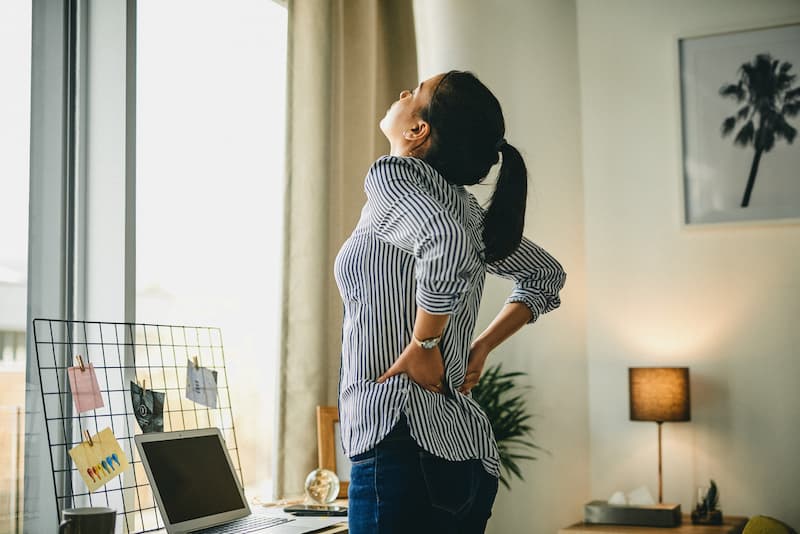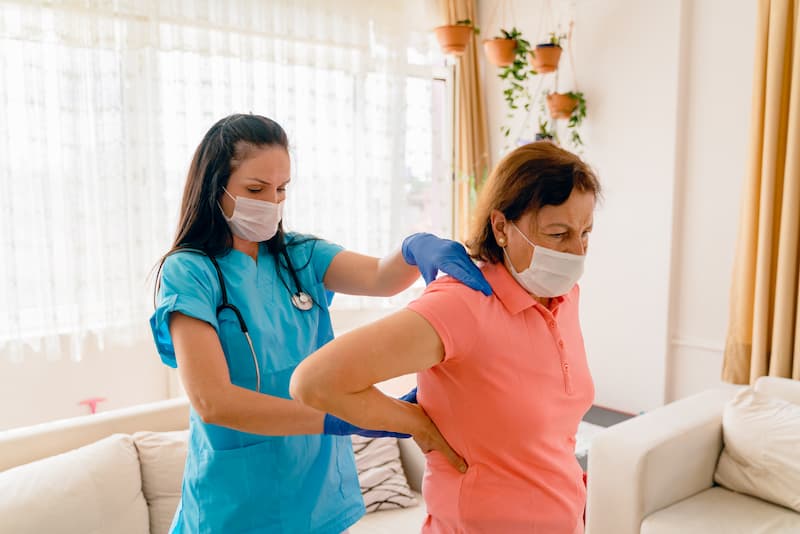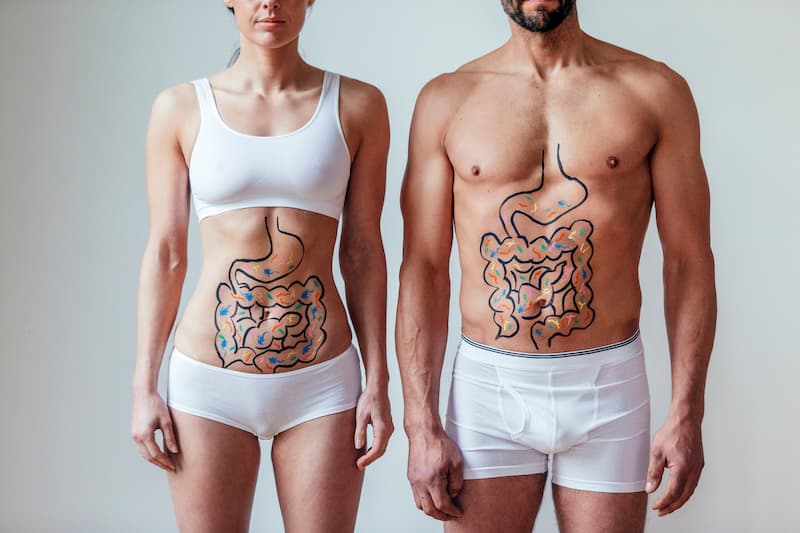 OUR LOCATIONSCall to book (212) 604-1300
OUR LOCATIONSCall to book (212) 604-1300
 OUR LOCATIONSCall to book (212) 604-1300
OUR LOCATIONSCall to book (212) 604-1300

It’s not easy to point out immediately the reason behind your lower back pain because the source can originate from the organs located in the abdominal, mid-back, or pelvic regions. Lower back pain is very common – according to the National Institute of Neurological Disorders and Stroke, it’s the most common cause of job disability. At least 80 percent of Americans will experience a form of back pain during their lifetime.
So what can be the cause of your lower right back pain? It could be simple muscle pain, a sign of irritation or inflammation of an internal organ, or it could infection. But there are times that the pain has nothing to do with the back at all. Except for the kidney, most of the body’s internal organs are located in front and the pain may come from those organs and is simply radiating to your lower back. Here’s what you need to know about lower back pain, its possible causes when to consult your doctor, and how it’s treated.
The most common general sources of lower right back pain are:
Most cases of lower back pain subside and disappear after a short time. It stems from minor injuries to the muscles and/or ligaments in the lower back. Your body has the ability to heal itself from these minor issues. But if the pain persists and worsens after a few days, or if the pain is sudden and severe, you should go see the doctor immediately.
Your lower right back pain can also be a sign of a serious condition that should be checked by a doctor immediately. These potentially serious conditions are the following:
Don’t think twice about seeing your doctor if your back pain becomes severe, that it disrupts your daily functions or if the pain happens suddenly and does not subside with rest or pain medications.
Pain in your lower right back can also be a sign of damage or injury to your spinal structures – the lower right back muscles, the lumbar intervertebral discs, or the facet joints. These usually come with centralized pain around the spine, but the pain can also happen on one side of the spine.
Muscle strain is the common cause of low back pain and presents mainly on the lower right hand side. These strains happen because of minor injuries such as twisting or impact-style injuries such as in a car accident or sports. The usual symptoms include:
Most likely, you’re not dealing with a fracture that requires immediate and special care. Back pain is common among adults and most will experience this in their lifetime. It’s definitely annoying and can be bothersome, but rarely is there a need to worry just because there’s mild pain only on the right or left side of your back.
However, there are a few exceptions to this. Age is one, since an older adult may experience a minor injury that can result in a more serious condition later on. This happens because you may have low bone density or have arthritis that causes pain. Another factor is athleticism. Those who are in sports professionally may experience greater musculoskeletal wear and tear than most people. Athletes are more vulnerable to fractures, herniated disks, or arthritis.

Pain that started for no particular reason and located on the left or right side of your back will usually get resolved on its own or with minimal treatment. But if you’ve been dealing with intense pain for more than a week and over-the-counter pain medications are not having an effect, you have to call your doctor. He will likely recommend taking stronger medications, prescription-strength muscle relaxants, and anti-inflammatory medications that should be able to do the job. He can also recommend a physical therapist, chiropractor, or osteopath who can give you hands-on treatment for faster relief.
The pain that originates from your spinal column may come from the small facet joints that run along the back of your spine, the discs in each motion segment, and/or the nerve roots that extend to the right hand side of the spine at each segment. The common lower back conditions in this category include the following:
A disc between the two vertebrae may suggest a hernia on the right side of your spine, which results in the disc protruding or leaking. Symptoms of a herniated disc include dull low back pain that may radiate into the buttocks and/or right leg.
The narrowing of the spinal canal can be caused by a bone spur, a herniated disc, or other types of obstruction. This causes lower right back pain that can also radiate into the buttocks and/or right leg.
Possible symptoms of arthritis affecting the facet joints in the spine include stiffness, discomfort, and local tenderness in the lower right back. These symptoms can also be the result of a nerve on the right side of the spine being compressed by an arthritic bone spur on the facet joint.
Your sacroiliac joints connect the bones of your pelvis with the base of the spine. If the joint on the right side of your pelvis has too much or too little movement, you may feel pain in the lower right back and/or right hip.
This condition may originate in the lower sacroiliac joint, and its early signs may present as lower right back pain and/or right hip pain. Long-term, ankylosing spondylitis may cause spinal joints and vertebrae to fuse together, which can limit the motion in your spine.
Lower right back pain can also originate from problems in the spinal column or far-reaching pain conditions. These include:

There are several common internal causes of back pain. It could be kidney problems, ulcerative colitis, appendicitis, gynecological disorders, or pregnancy. Here’s how to distinguish one from the other.
The signs of kidney infection and kidney stones can be very similar. You will feel low back pain on one side, which can come with pain during urination, nausea, and vomiting. If you’re having difficulties urinating, this is usually felt like a stone that moves in the kidney, which goes through your ureters and right into your bladder and urinary tract. You may notice blood in your urine. A kidney infection can cause tenderness in the lower right back around your kidney area, plus fever and local inflammation.
In this case, your colon or your large intestine is persistently inflamed, which results in frequent abdominal cramping and causes lower right back pain. Other symptoms of ulcerative colitis include chronic digestive problems such as diarrhea, fatigue, weight loss, and rectal pain.
The appendix is that very small finger-shaped pouch in the lower right hand side of your abdomen. Inflammation will make your appendix leak or rupture and one of its symptoms is lower right back pain. There are varying symptoms and it’s possible that the appendix can show chronic symptoms of lower right quadrant pain. The typical sign is sudden abdominal pain that focuses on the lower right abdomen, plus coupled with nausea, vomiting, and fever.
You may need to undergo a procedure called an appendectomy, which is the surgical removal of the appendix. Your doctor may also opt to treat you with antibiotics instead if the condition is not dire. There are patients who didn’t need surgery later on when they got treated consistently with antibiotics.
If you’re a woman, the various reproductive organs located in your pelvis can result in lower right back pain. Endometriosis is one, which creates a sharp and sporadic pain in your pelvic area that can radiate to your lower right back. Another condition is fibroids, which are tissue masses that grow in and around the uterus. Aside from lower right back pain, you may also feel frequent urination, pain during intercourse, and you may experience abnormal menstruation.
Women will commonly experience low back pain during pregnancy as the baby develops. This can be alleviated by different pain management methods, such as stretching, exercise, and rest.
There are also less common causes of lower right back pain, which could be early symptoms of gallbladder inflammation and liver problems. Gallbladder dysfunction causes upper right abdominal pain and right-sided back pain while liver problems can be felt in the upper right abdomen and/or back. It also comes with fatigue, nausea or lack of appetite, and jaundice.
There are causes of lower right back pain that are unique to women, such as endometriosis and pregnancy.
Testicular torsion is one of the conditions in men that can cause lower right back pain. This happens when the spermatic cord, which is inside the scrotum and carries blood to the testes, becomes twisted. As a result, blood flow to the testicle is severely reduced or even cut off completely. Symptoms of testicular torsion include sudden and severe groin pain that may radiate to the back on either side, depending on which testicle is affected. You may also experience swelling of the scrotum, as well as nausea and vomiting.
The chances of this happening are rare, but counts as a medical emergency. The testicle can be irreversibly damaged without proper blood supply.
What to Do When You Have Lower Right Back Pain
It’s practical to go see your doctor whenever you feel pain that is new, intense, or worrisome. If the pain interferes with your usual activities or comes with nausea and fever, you should get medical help immediately.
In cases in which medical intervention is not needed, you can manage your pain with home remedies or lifestyle changes.
Let New York Pain Care check your condition and create a custom fit treatment plan to relieve your pain and restore your health. We provide one-on-one care and state-of-the-art treatments to help you find relief and get back to living your normal life. Our skilled team of medical professionals can treat everything from lower back pain to spinal deformities. Call us and let’s begin your journey to recovery.
Learn more: A Guide to Lower Back Pain Relief






